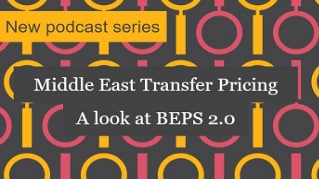Transfer pricing describes all aspects of inter-company pricing arrangements between members of a multinational group, including transfers of tangible goods; services; intellectual property; and loans as well as other financial transactions.
Globalisation has led to cross border intra-group dealings becoming the norm. Taxpayers must comply with the regulatory environment in jurisdictions where they operate, which is time consuming and can be complicated. Tax Authorities frequently exchange information, which increases scrutiny on cross border intra-group dealings and associated business structures, especially where taxable benefits may arise.
When could this be relevant to you
- You need assistance with supporting your existing transfer pricing policies and meeting documentation requirements for different transaction types?
- You wish to implement new transfer pricing policies which could be driven by changes in your business and/or supply chain?
- You are required to defend your transfer prices or need assistance on dispute resolution matters and litigation cases?
- You are examining the impacts of reforms stemming from the Base Erosion and Profit Shifting project.
What we do
- Support transfer pricing policies by preparing Masterfiles, Local Files and Country by Country reporting templates, in accordance with regulatory requirements.
- Develop tax efficient and globally defensible transfer pricing models, in line with commercial business activities and international transfer pricing practices.
- Advise multinational groups on business restructuring and value chain transformation.
- Assist businesses with the practical implementation of transfer pricing models and provide Tax Authority dispute resolution services as well as help manage TP litigation cases from prevention and management to resolution.
Value Chain Analysis: Dealing effectively with tax transparency
Whether it is explaining the profit profile of your country by country reporting, evaluating the resilience of your transfer pricing generally or testing the application of specific methods, it is much more important now to identify which activities in your business generate value and how profits get allocated.
Increasingly people are turning to Value Chain Analysis (VCA) to meet these needs and the OECD has devoted a significant part of its treatment of the profit split method to distinguishing the roles of VCA, which is more general, and profit split, which is the application of a specific TP method.
For an introduction to VCA for tax, our animation illustrates two different approaches and the relative merits of each.










